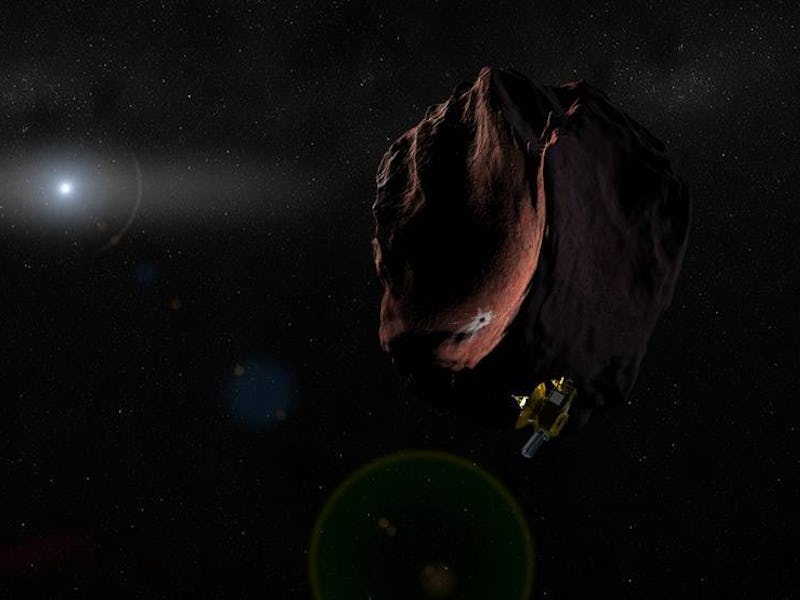The New Horizons Probe Is Heading for an Ancient Red Planet

We’ll have to wait until January 2019 to know for sure, but it looks like NASA’s New Horizons mission has successfully categorized a small, red planet, not named Mars, all the way in the distant reaches of the Kuiper Belt.
After last year’s successful study of Pluto, the New Horizons mission was extended to see what it could tell us about objects in the Kuiper Belt — a region of space which contains nearly a dozen small planets, yet remains terribly under-explored (especially given how vibrant those outskirts actually seem to be).
The main post-Pluto flyby target of New Horizons is an ancient object called 2014 MU69. The spacecraft will approach it in the fall of 2018, and complete its closest approach around that New Year’s, passing less than 2,000 miles from the surface.
In her presentation “Hubble Reveals that New Horizons Flyby Target 2014 MU69 Is Red,” during the American Astronomical Society’s annual conference this week, post-doctoral researcher at the Southwest Research Institute, Amanda Zangari, explained that her team measures such objects on a color scale. MU69 is “redder” than Pluto, which means it’s indeed a true member of the Cold Classical belt — the region that houses some of the most ancient material known to our solar system.
The redness shows the presence of a molecule class called tholin, which features heavily over icy objects like the others in the Cold Classical part of the region. MU69 is the smallest Kuiper Belt object yet to have its color measured. So when New Horizons passes by on January 1, 2019, it’ll be collecting data on among the oldest, most primordial building blocks we’ve ever known, and will cement MU69’s status as a Cold Classical object.
The Kuiper Belt is full of icy, ancient celestial bodies that could provide clues about the formation of our solar system.
It’s natural to think of the Kuiper Belt as a somewhat uniform entity, but its actually divided in a bunch of different regions, including the Cold Classical. This region, where 2014 MU69 is located, tends to have objects with small orbital tilts that don’t interact with each other — which means they’re largely pristine bodies that the scientists believe to be remnants of the primordial discs that formed other planets. This planet was originally discovered by the Hubble Telescope and selected for this project because of its accessibility.
As always, the end game is to learn more about the origins of the solar system, and, beyond that, of the Milky Way itself. Studying the chemical makeup of MU69 should get us one step closer.